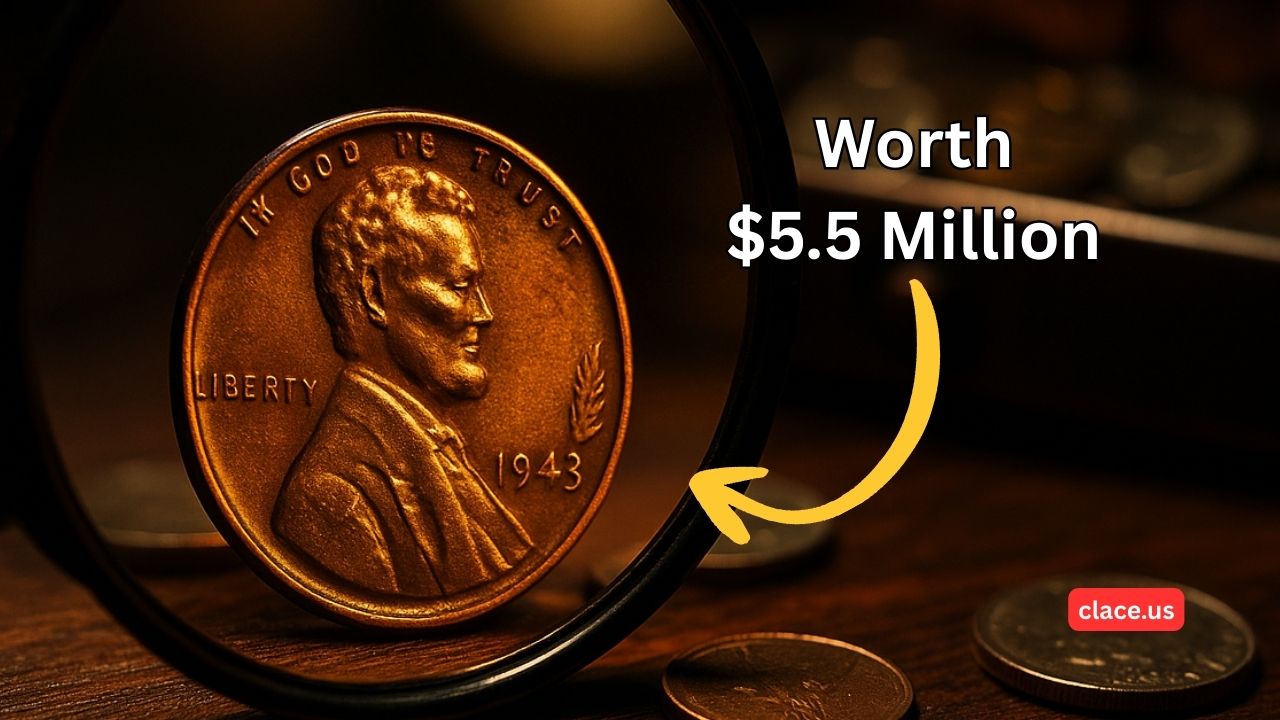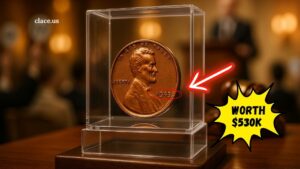The Lincoln Wheat Penny Valued At $5.5 Million, Still In Circulation?
Imagine casually sorting through spare change and uncovering a penny worth $5.5 million. That may sound far-fetched—yet in 2025, rare Lincoln Wheat Pennies have shattered records at auction.
If you’re curious whether your old cent holds that kind of value, this guide tells you exactly what to look for, why certain pennies are so rare, and how to authenticate them.
In this article, we’ll highlight the most jaw-dropping facts and figures, present a helpful table of record-setting pennies, explain minting quirks, and walk you through the key things collectors watch for.
Why Some Wheat Pennies Soar in Value
- Rarity and error-driven rarity: Some Lincoln Wheat Pennies weren’t supposed to exist—like those struck on the wrong metal (e.g., copper instead of steel).
- Mint marks and low production numbers: Pennies from specific mints (like Denver ‘D’ or San Francisco ‘S’) often had fewer minted, making them much scarcer.
- Condition matters—pristine sells: A penny graded near-mint or uncirculated can fetch six or even seven figures.
- Historical intrigue: Original designer initials (like “VDB”) or misprints make coins more coveted.
Record-Setting Wheat Penny Sales
| Coin Variant | Key Feature | Auction Price | Why It Matters |
|---|---|---|---|
| 1943 Copper Penny | Wrong metal (copper in wartime steel) | $5.5 million | Ultra-rare wartime error |
| 1943-D Bronze Penny | Bronze struck in Denver, wrong metal | ~$840,000 | Believed only 1 known, rarest of all |
| 1909-S VDB | Design initials from San Francisco mint | Hundreds of thousands–upwards of $360,000 | Very low mintage, controversial initials |
| 1955 Doubled-Die Penny | Visible doubling on date and letters | Tens of thousands | Fascinating mint error, still fairly accessible |
| Other notable rarities | Low-mintage, mint errors | Varies widely | Scarcity and condition determine value |
The Anatomy of the $5.5M 1943 Copper Penny
- Wartime composition: In 1943, the U.S. Mint switched from copper to zinc-coated steel to conserve copper for WWII. But a few copper planchets mistakenly got used—making any 1943 copper Wheat Penny extremely rare.
- Auction records: One of these copper anomalies recently sold for an astonishing $5.5 million, making it one of the most valuable U.S. coins ever.
- How collectors find them: Use a magnet test—if the penny doesn’t stick, it’s not steel and may warrant closer inspection.
Other Show-Stopping Wheat Pennies
- 1943-D Bronze: Struck on copper instead of steel at the Denver Mint. A single example known to exist fetched around $840,000.
- 1909-S VDB: Designer Victor David Brenner’s initials were sized controversially and then quickly removed—only around 484,000 were minted. Today, high-grade versions fetch hundreds of thousands.
- 1955 Double-Die: The date and inscriptions appear doubled due to a die error. While less rare, fine-condition specimens still bring in tens of thousands.
Tips for Spotting a Potential Treasure
- Check the year and mint mark—look for rare dates (1943, 1909-S, 1955) and mint marks (‘D’ for Denver, ‘S’ for San Francisco).
- Use a magnet test—non-magnetic pennies from 1943 could be copper error coins.
- Inspect the inscription closely—doubling or misaligned lettering can signal high value.
- Assess the condition—better condition (sharp details, minimal wear) equals higher price.
- Get it authenticated—always have a suspect coin graded by reliable numismatic experts before selling or valuing.
The idea that a mere penny, long forgotten in a jar or pocket, could be worth $5.5 million sounds like a fairy tale—but it’s provably real. The magic lies in rare errors, limited mintages, and exceptional condition.
Whether it’s the famous 1943 copper anomaly or other classic Wheat Penny rarities, there’s true monetary magic hidden in plain sight.
By knowing what to look for and verifying your finds professionally, you could turn something ordinary into a historic windfall.
FAQs
Absolutely. A rare 1943 copper Wheat Penny—a wartime error coin—recently sold for that amount at auction. While incredibly rare, it’s a verified reality.
Use a magnet test (1943 copper error coins won’t stick), check for mint marks and doubled inscriptions, and get any promising coin professionally graded.
The most sought-after include error coins like the 1943 copper or 1943-D bronze, low-mintage varieties like the 1909-S VDB, and minting errors like the 1955 doubled-die. Condition and rarity together drive value.



